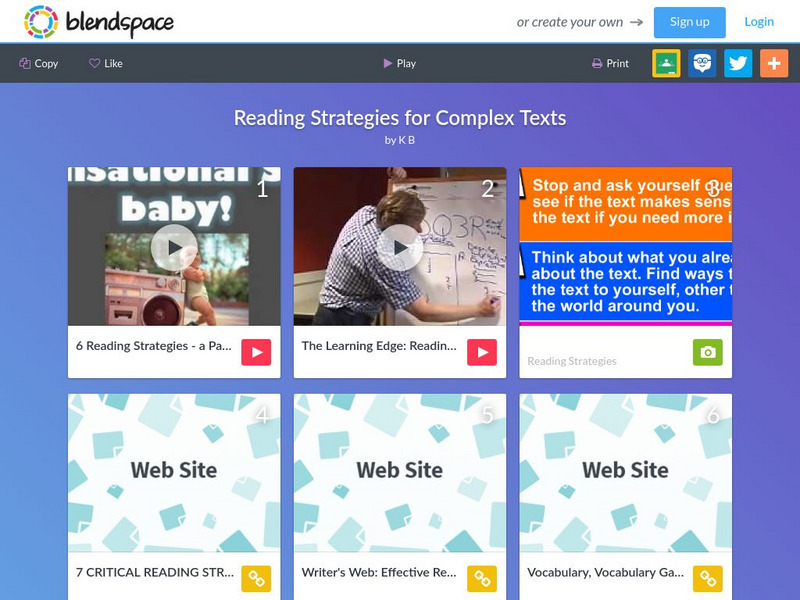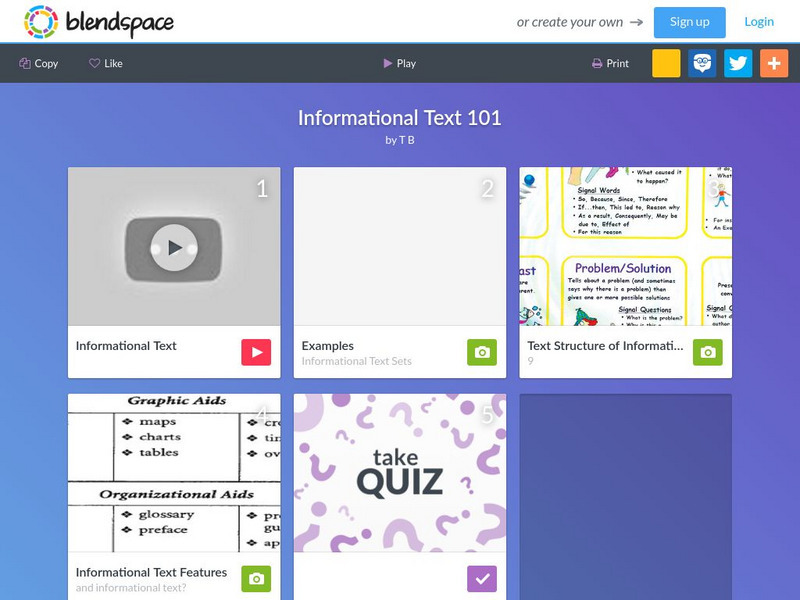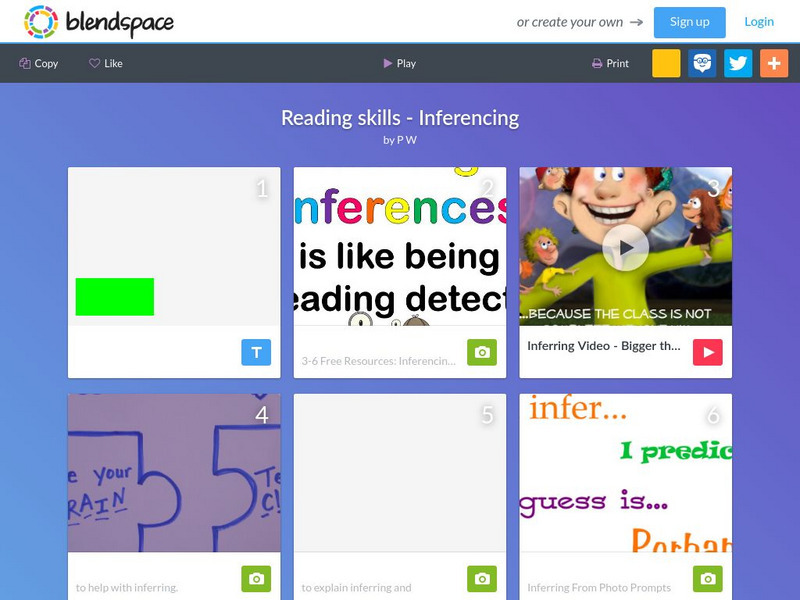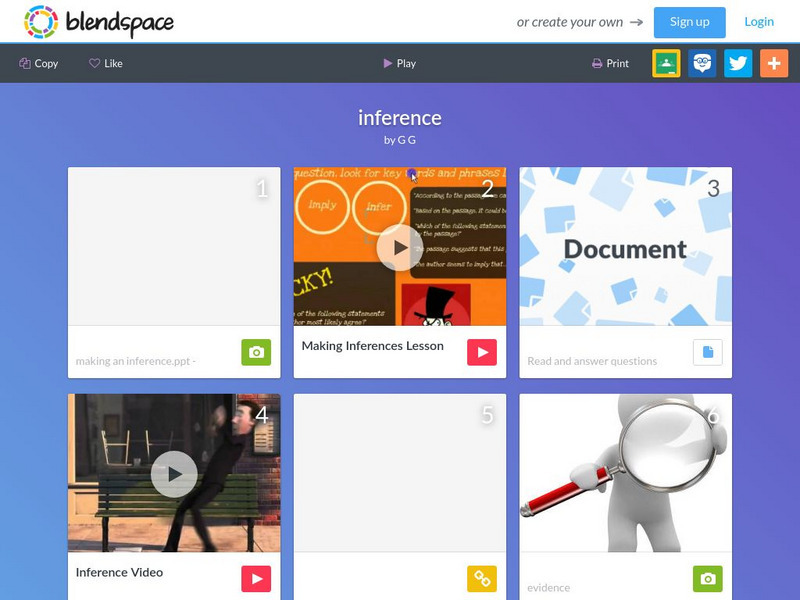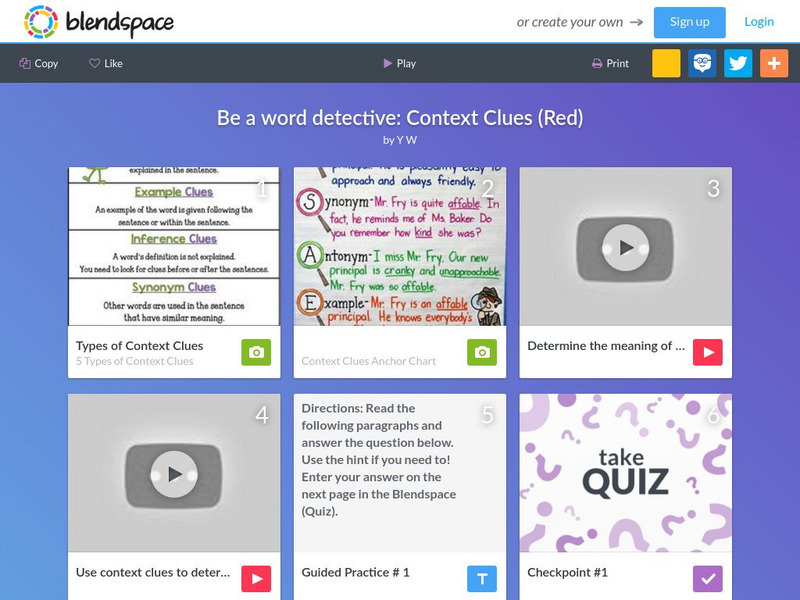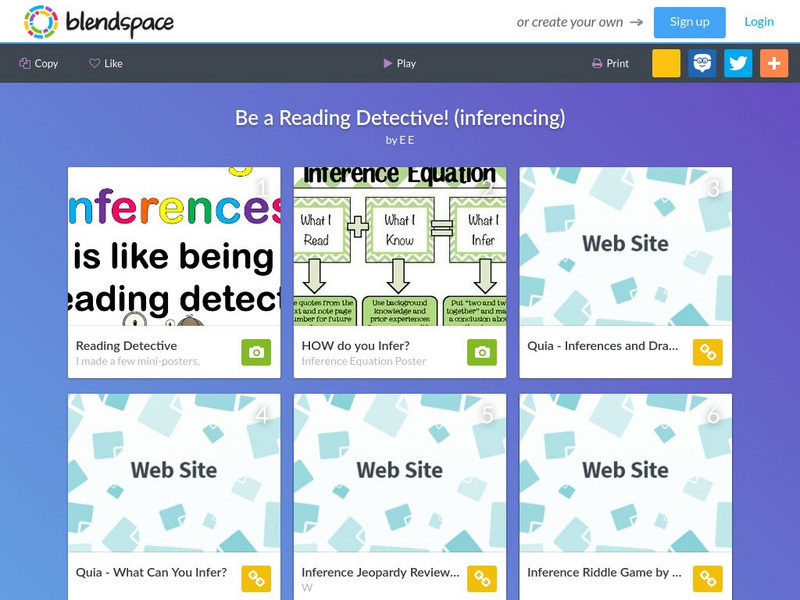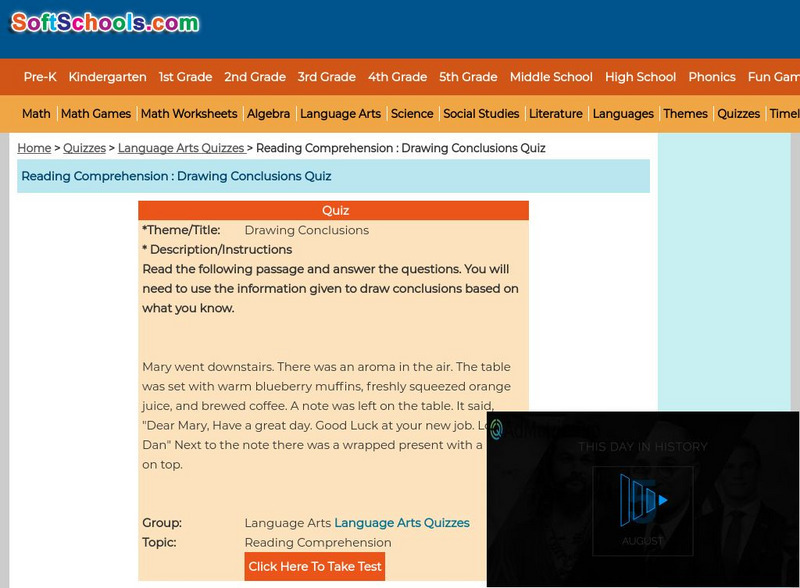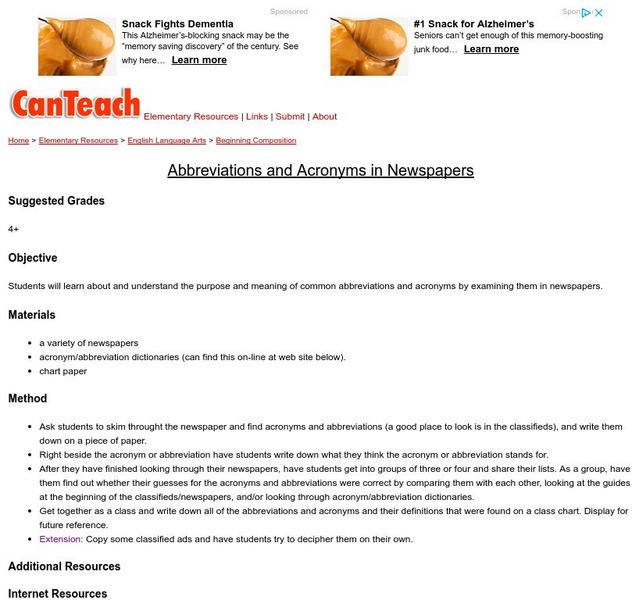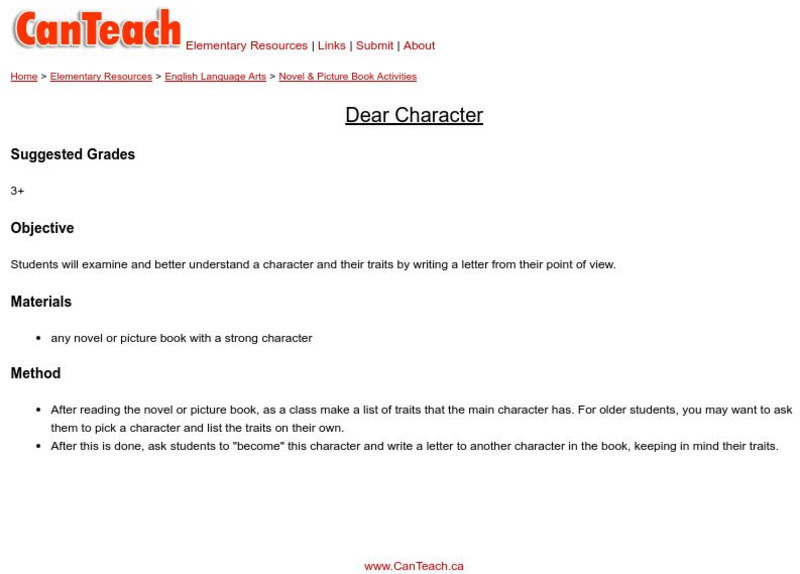Hi, what do you want to do?
Other
Ccss Literacy E Handbook: Informational Text: Reasons and Evidence in Text
A short explanation of using reasons and evidence as supporting details. Click the link to see a model of how to identify reasons and evidence in an informational text. Click on the Model button on the bottom right to see a model.
Quia
Quia: Context Clues
Read each sentence and use context clues to choose the meaning of the bolded word in this ten-question quiz.
Other
Reading Quest: Strategies for Reading Comprehension: Summarizing
Teach students to summarize nonfiction text with these lesson plans. Includes worksheets and activities that can be downloaded and printed.
Other
Strategies for Reading Comprehension:reciprocal Teaching
Use this page to understand the reciprocal teaching strategy that includes the role of the clarifier in student groups.
Curated OER
Mc Graw Hill: Informational Text: Compare Text Structures
This learning module focuses on comparing organizational patterns in informational texts including chronological order, compare and contrast, cause and effect, and problem and solutions. Click on each text structure for an explanation.
SMART Technologies
Smart: Making Inferences
Inferencing is finding clues and using background knowledge to determine an explanation from facts in a passage or story. It's "reading between the lines" of a story to understand what the author doesn't state.
Application Magazine
Aplicaciones: Redaccion Interactiva
Here you will find eighteen different set of exercises so you can test your reading comprehension.
TES Global
Blendspace: Reading Strategies for Complex Texts
A nine-part learning module on reading strategies including links to videos, images, websites, and activities.
TES Global
Blendspace: Informational Text 101
A five-part learning module on informational text including links to a video, images, and an assessment.
TES Global
Blendspace: Reading Skills Inferencing
A twelve-part learning module with links to texts, images, and videos with information and examples of how to make inferences.
TES Global
Blendspace: Informational Text
A twelve-part learning module with links to images, texts, slides, and charts that teach skills to build reading comprehension with informational texts.
TES Global
Blendspace: Inference
A fifteen-part learning module with links to images, videos, websites, and texts to use while learning to make inferences.
TES Global
Blendspace: Text Features
A six-part learning module with links to videos and images to use while learning about text features in a nonfiction text.
TES Global
Blendspace: Be a Word Detective: Context Clues (Red)
An eleven-part learning module with links to images, videos, texts, and quizzes on using context clues to understand vocabulary words.
TES Global
Blendspace: Reading Comprehension Visualizing
A five-part learning module with links to images and web sites to help student improve reading comprehension by visualizing.
TES Global
Blendspace: Abbreviations
A nine-part learning module with links to images, videos, and websites about abbreviations and how they are formed.
TES Global
Blendspace: Be a Reading Detective! (Inferencing)
A six-part learning module with images and websites that students can use to build inferencing skills.
TES Global
Blendspace: Inference Lessons
An eleven-part learning module with links to images, videos, and websites designed to build inferencing skills.
Scholastic
Scholastic: Nonfiction Comprehension: Making Personal and Textual Connections
This is a lesson plan to help elementary students connect to nonfiction text as they read.
Soft Schools
Soft Schools: Drawing Conclusions
Read a literary text paragraph and then answer questions that require the reader to draw conclusions from the text in this nine-question quiz.
Room Recess
Roomrecess: Comprehension Crane
Play an online reading comprehension game by reading a short text and then choosing the correct answer to comprehension questions in a claw drop game.
Can Teach
Can Teach: Abbreviations and Acronyms
Students can find and analyze different abbreviations and acronyms using newspapers. An online abbreviation and acronym dictionary is linked to this lesson plan for 4th grade.
Can Teach
Can Teach: Dear Character
In this lesson plan students will demonstrate reading comprehension and writing skills by writing a letter to a character in a story. Lesson plan indicated for 3rd grade and above, but could be adapted for younger grades.
Can Teach
Can Teach: Storyboard Frames
For this lesson plan learners will be able to focus on the main events of a book by drawing a storyboard. Lesson plan indicated for 2nd grade and above.











